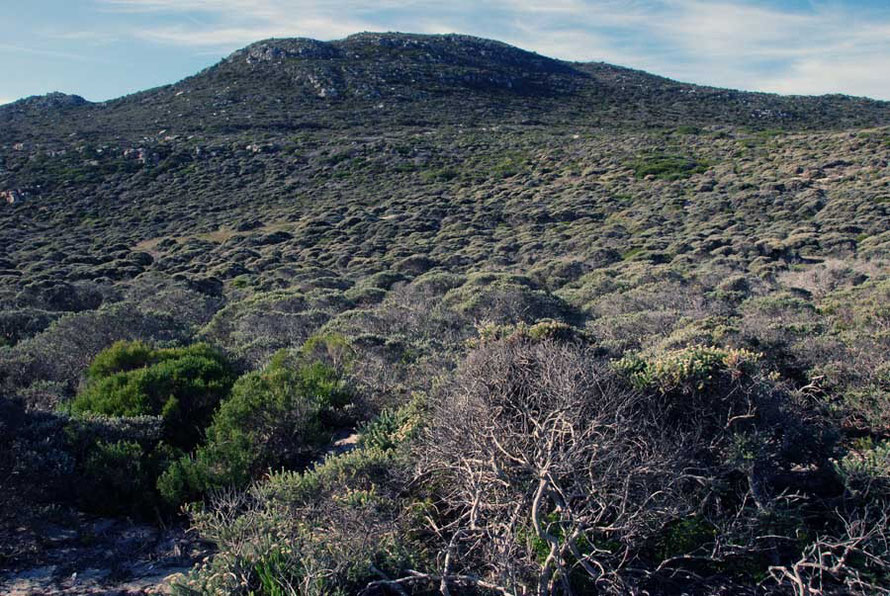The Western Cape: The first settlers
South Africa has nine provinces, of which the Western Cape is one. It is bordered by the Eastern and Northern Cape provinces. The Western Cape is the province at the bottom left of the map below with Cape Town (Kapstaad) as its capital.
Rainfall is key to the oringinal settlement patterns in South Africa. In the east abundant rains arrive with moist air from the Indian Ocean. As you move west rainfall becomes increasingly scarce resulting in desert along the coastline of Nambia and the North Cape coastline. Arable and pastoral agriculture is possible in the East and not in the West. The exception is the Cape Pensinsula and its vicinity which gets heavy winter rains, making intensive agriculture possible.
Human history goes back a long way in Southern Africa. It is probable that he hominids of modern humans started here: the fossil record in South Africa for homo sapiens has been tentatively dated at 50,000 years.
Three groups of peoples emerged in pre-Christian South Africa - the San hunter-gatherers in the dry areas in the west, the Khoikhoi pastoralists around the Cape and the Bantu-speaking African farmers.
Pastoralism was probably transmitted southward from East Africa as an extension of hunter-gathering, reaching South Africa 2,500 years ago. Mixed farming (crop production and pastoralism) and the use of iron implements is now thought to have originated in West Africa and Lake Victoria a few centuries before the Christian era. This is said to account for the widespread diffusion of the Bantu languages throughout much sub-Saharan Africa.
These changes were heralded not by large waves of displacing migration but rather by a gradual drift of people and practices southward in search of better soils and more abundant rainfall. (For the preceding see Chapter 1 of l. Thompson's excellent A History of Southern Africa 2001.)


